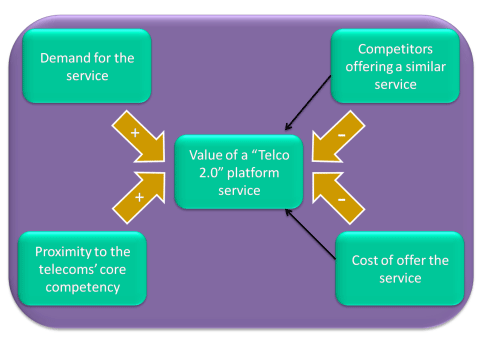
article page
| 1 | 2 | 3 |
That a “free” service could in any sense be a good idea—especially in the middle of a recession—is highly divergent from the traditional business models of many telecoms. However, the mathematics behind this practice is sound and case studies abound. See A Survey of the Economic Role of Software, also by Evans, Hagiu & Schmalensee, for a detailed explanation, and the Wikipedia article on two-sided markets for a good overview of the math. The previously cited books, Free and Invisible Engines contain dozens of examples from multiple industries.
The importance of continuing to attract partners and suppliers through low-cost or free services as the model becomes profitable: Continuing to support the partners and suppliers network (physical and virtual) remains critical in the second phase as well, where this investment pays off through rapidly growing customer and groups. Importantly, in both the growth and ongoing phase, charging partners and suppliers at any significant level for any services—including API access—can stifle their business models.
Choosing the right set of platform services: Many analyses of platform services are limited to comparing the potential revenue from a service to the costs required to offer it. Both of these elements are essential; indeed the lower costs provided by a modern fully functional order management system overcomes the legacy cost structure that has to date served as a “show stopper” for the model discussed here. As this requirement is overcome, however, a deeper analysis needs to take place, as illustrated below:
|
|
Charging partners and suppliers at any significant level for any services - including API access - can stifle CSP business models. |
|

As shown here, a full service-value analysis depends on competition and proximity to core competencies as well as cost and demand. For instance, billing, shopping cart, and security services are widely offered on the internet, so without the ability to provide a clear differentiator in this space, telcos would do well to avoid these arenas. In contrast, services that are both close to a telecom’s core competency as well as not widely available from other sources have greater potential, all other things being equal. Location-based services fit these requirements, and so are amongst the first network services being offered.
All told, by understanding the factors that constitute a lucrative telecom service offering, working within an ecosystem, and using pricing and other practices that are informed by a deep understanding of the complex dynamics of these models, telcos have the potential to generate considerable revenue growth for themselves and their ecosystem of partners and suppliers. Business models that depend on even a fraction of an ecosystem-generated revenue stream have the potential to achieve what is the optimal business outcome for telcos; namely, to secure significant growth in revenues without having to devise business models that diverge too far from their core strengths.
|
|
|
|
| |
article page
| 1 | 2 | 3 | |




